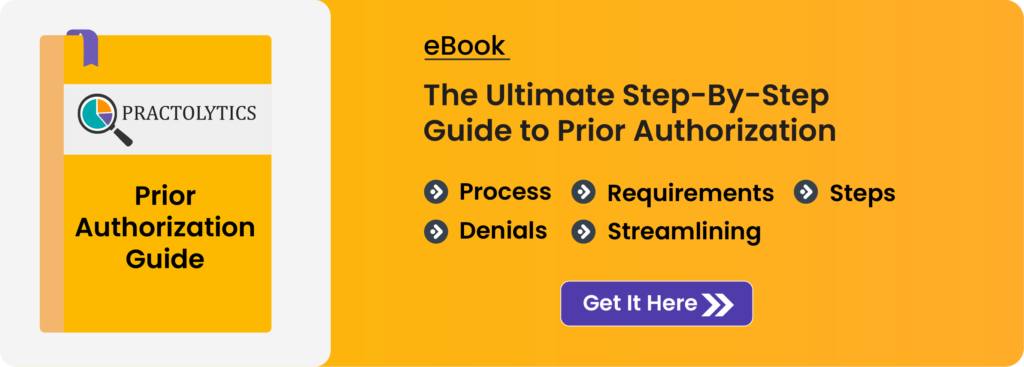How AI-Powered Prior Authorization is Transforming Orthopedic Surgeries
If you’ve ever worked in an orthopedic practice—or sat as a patient waiting for surgery—you already know how the story goes. The surgeon’s ready, the patient’s ready, the operating room is set… and then everything screeches to a halt. Why? Two words: prior authorization.
It’s the roadblock no one asked for but everyone has to deal with. In orthopedics, especially, prior auth has been the single biggest hurdle standing between patients and timely care. The issue isn’t that insurers want documentation—it’s that the process is painfully slow, unpredictable, and downright exhausting. Weeks of waiting, endless paperwork, phone calls that circle back to nowhere—it’s enough to drain even the most dedicated staff.
But here’s the good news: things are starting to change. Artificial Intelligence (AI) is stepping in to take on prior authorization, and the difference is night and day. What used to drag on for weeks is now being handled in days—or even hours. For patients dealing with pain, that kind of speed is invaluable. For practices, it’s a total game changer.
So what makes How AI-powered prior authorization is transforming orthopedic practices? How does it improve life for patients and staff alike? And why can outsourcing this process to the right partner make everything run even smoother?
Table of Contents
Why Orthopedic Surgeries Get Stuck in the Pre-Authorization Web?
Orthopedic procedures are high stakes. Surgeries like hip replacements, ACL repairs, or spinal fusions come with hefty price tags, detailed medical histories, and lots of insurance scrutiny. That means payers don’t just wave these surgeries through—they want proof. They want imaging results, physical therapy records, surgical notes, and evidence that conservative treatments have been tried first.
Miss even one piece of that puzzle, and guess what? Your request is denied, and you’re back to resubmitting everything. No wonder the average approval time for orthopedic surgeries under traditional systems can stretch to two or even three weeks.
Here’s the problem: patients can’t wait. A person with bone-on-bone knee pain or a herniated disc that keeps them from walking isn’t just inconvenienced—they’re suffering. Every day matters. Yet the process drags on, leaving both patients and practices frustrated.
Where AI Steps In
AI isn’t just a shiny new gadget in healthcare—it’s a practical tool that can make prior authorization less of a nightmare. Instead of staff members combing through EMRs, trying to pull the right details, and hoping they meet payer requirements, AI does the heavy lifting.
Here’s how:
- Smart data extraction: AI pulls information directly from electronic medical records, imaging reports, and patient histories.
- Payer-specific matching: It instantly checks what each insurer wants for that specific surgery and flags if anything is missing.
- Approval prediction: Based on past claims, AI can even estimate the likelihood of approval before submission.
What does that mean in practice? Clean, accurate submissions the first time. Instead of weeks of waiting, practices are seeing approvals in as little as 24–72 hours.
Human Impact of Faster Prior Authorization in Healthcare
A patient’s healthcare journey is often shaped by moments of waiting. Consider a 55-year-old with severe hip pain. They’ve tried every recommended treatment, but nothing works. When the surgeon says, “You’re ready for a hip replacement,” hope returns. Then reality strikes: insurance approval could take weeks. For the patient, that means more pain, more uncertainty, and more stress.
Now imagine that same patient in a practice supported by AI-driven prior authorization. Instead of weeks, the staff can say, “Approval will likely come in a couple of days.” The relief is instant. Anxiety gives way to confidence, and the patient feels genuinely cared for.
This is the human impact of faster authorizations. It goes beyond efficiency—it builds trust, strengthens provider-patient relationships, and ensures fewer delays in treatment. Every day shaved off the waiting period matters for someone living in pain.
When practices embrace smarter, faster prior authorization, they don’t just streamline workflows—they change lives. For patients, that difference is everything.
How the Numbers Stack Up?
Here’s a side-by-side look at traditional vs. AI-powered prior authorization:
|
Process |
Traditional PA |
AI-Powered PA |
|
Average Approval Time |
14–21 days |
1–3 days |
|
Denial Rate |
20–30% |
Under 10% |
|
Staff Time per Case |
3–5 hours |
Under 1 hour |
|
Cancellation Risk |
High |
Low |
|
Patient Satisfaction |
Moderate |
High |
These aren’t just numbers on a chart—they’re the real-world outcomes practices are reporting. AI-driven systems are cutting manual workload by over 70% and accelerating approvals by up to 80%.
Ripple Effects on Practices
It’s tempting to focus only on patients (and they’re obviously the most important), but let’s talk about what AI does for practices themselves.
- Revenue moves faster. Orthopedic surgeries cost tens of thousands of dollars. The faster the approval, the faster reimbursement flows back into the practice.
- Denials drop. With cleaner submissions, the chance of rejection plummets.
- Staff are happier. Instead of hours wasted on phone calls, they get to focus on supporting patients and coordinating surgeries.
For surgeons, AI brings predictability. No more last-minute cancellations because insurance didn’t come through. Operating schedules run smoother, and providers can focus on what they do best: surgery.
Burnout, Meet Your Match!
Orthopedic practices often run lean. Staff juggle everything from scheduling MRIs to coordinating post-op care, and adding hours of paperwork to that list? It’s a recipe for burnout. AI takes that burden and streamlines it.
Suddenly, staff members aren’t tethered to the phone with insurance reps. They’re not stuck chasing missing notes. They’re spending time where it matters—supporting patients and surgeons.
That doesn’t just improve morale, it reduces turnover. And as every practice manager knows, staff turnover is one of the costliest challenges in healthcare.
Future is Predictive
Let’s be real—prior authorization has always been one of those things that slows everything down. Doctors know it, staff know it, and patients definitely feel it. You’re stuck waiting, chasing paperwork, and crossing your fingers that the insurance company doesn’t throw it back at you.
Now here’s where things are getting interesting: predictive prior authorization. Instead of just submitting and waiting, some AI systems can already tell you—before you even hit “submit”—whether a request is likely to get approved. We’re talking about up to 80% accuracy. That’s a big deal.
Think about what that means in the clinic. Instead of telling a patient, “We’ll let you know once insurance gets back to us,” you can give them a pretty solid answer right there in the room. That kind of confidence makes the whole process less stressful for everyone.
For practices, it’s also a huge time saver. No one wants to waste hours preparing a request that’s going to come back denied. If the system shows it might be tricky, your staff can beef up the documentation ahead of time. If it looks like an easy approval, you move forward without the extra back-and-forth. Either way, you’re not stuck playing guessing games.
Patients benefit too. Instead of sitting around waiting for weeks, they can start treatment faster. In areas like orthopedics, where surgery timing can make a huge difference in recovery, that speed really matters. It’s less about paperwork and more about actually getting people the care they need.
And the best part? This is just the beginning. Predictive tech is only going to get smarter as it learns from more data. Soon enough, approvals won’t feel like pulling a lottery ticket—they’ll be consistent, transparent, and reliable.
The future of prior authorization isn’t just about being faster. It’s about making the whole thing predictable, less stressful, and way more patient-friendly. And honestly, that’s a win for everyone.
Outsourcing: The Smartest Shortcut
Now, let’s be real. Even with AI, managing prior authorizations still requires time, resources, and expertise. Not every practice has the bandwidth to keep up. That’s why outsourcing has become such an attractive option.
With a partner like Practolytics, you don’t just get access to AI-powered tools—you get a team that lives and breathes prior authorization every single day. That means no more chasing insurers, no more training staff on every payer’s quirks, and no more bottlenecks.
Practolytics brings:
- 20+ years of experience in healthcare management.
- 5 million claims processed annually.
- 1400+ active providers across 31 states.
- 100% HIPAA compliance.
Outsourcing with Practolytics lets practices shift their focus back where it belongs: delivering great care and performing life-changing surgeries, not wrestling with paperwork.
Wrapping It All Together!
Orthopedic surgeries do more than fix bones—they give people their lives back. The problem is, getting to surgery isn’t always smooth. Prior authorization often slows everything down. Patients wait. Staff chase approvals. Surgeons get stuck in the middle.
Most of the delay comes from back-and-forth calls, endless forms, and follow-ups. It’s frustrating, and it pulls time away from actual patient care.
AI is changing that. With automation, approvals move faster and errors drop. Denials go down too. What used to take days can sometimes be done in hours. Patients don’t sit around waiting, and practices don’t waste energy on repetitive steps.
Still, even with AI, prior authorization takes work. That’s where outsourcing helps. When an experienced team handles the process, staff don’t have to juggle paperwork and follow-ups anymore. They can focus on patients while experts take care of the approvals.
Put AI and outsourcing together, and you get a complete solution. The process runs faster, accuracy improves, and the stress on staff disappears. Patients get their surgeries scheduled sooner. Surgeons focus only on treatment. And the practice avoids delays that cost both time and money.
At the end of the day, progress in orthopedics isn’t only about surgical techniques. It’s also about fixing the process that leads up to surgery. When healthcare prior authorization is handled the right way, everyone benefits—patients, providers, and practices.
Read More – Prior Authorization Services for Podiatry : improving Patient Access and Care
Talk to Medical Billing Expert Today — Get a Free Demo Now!






